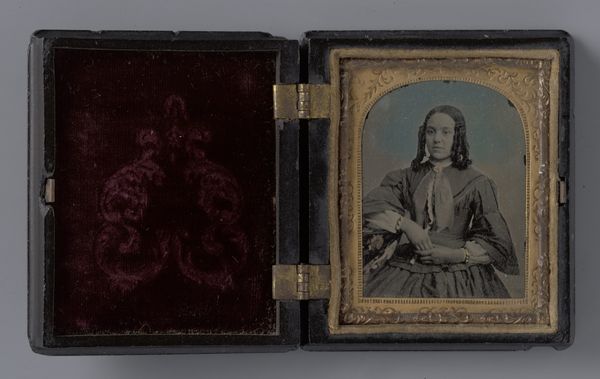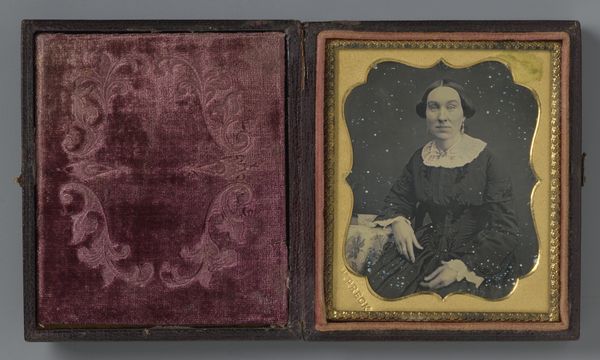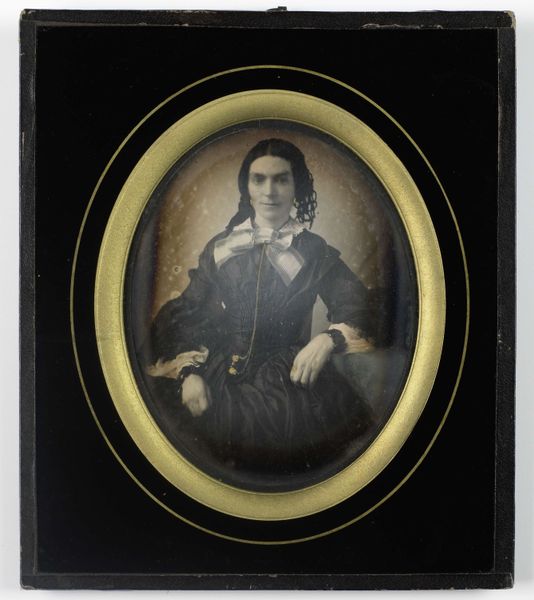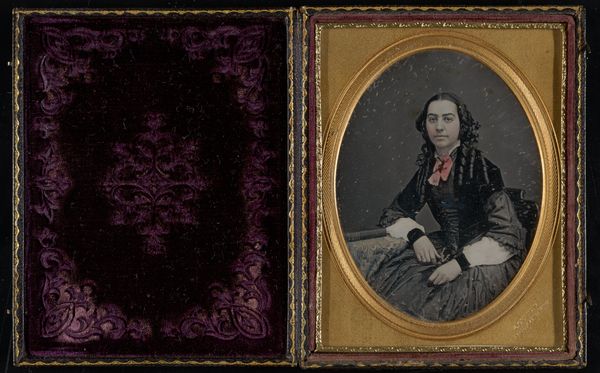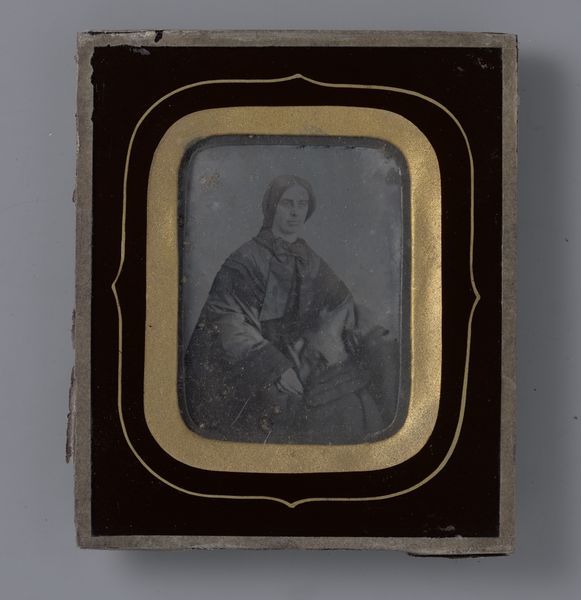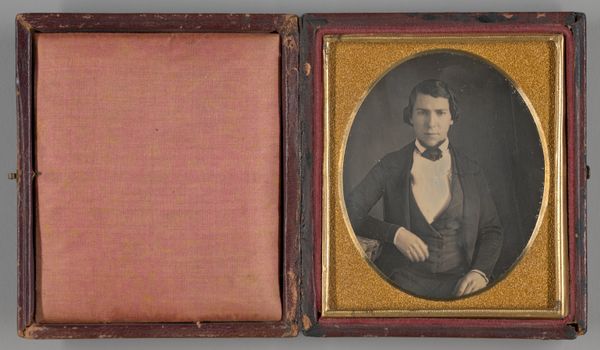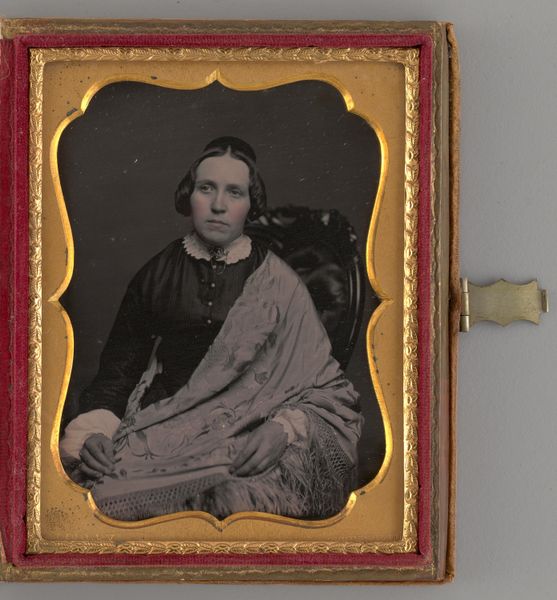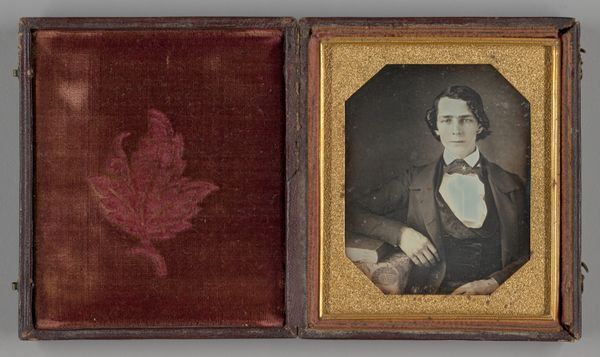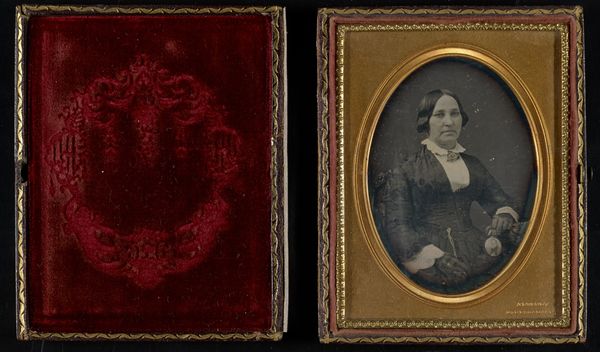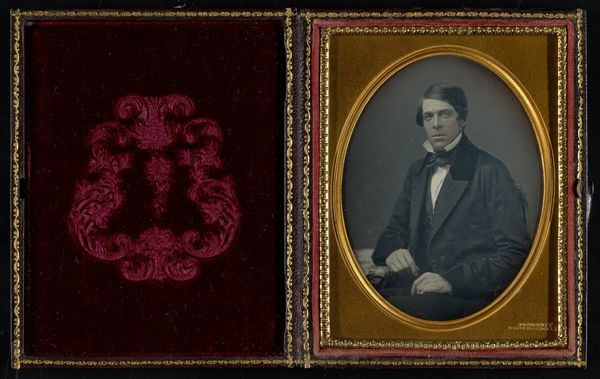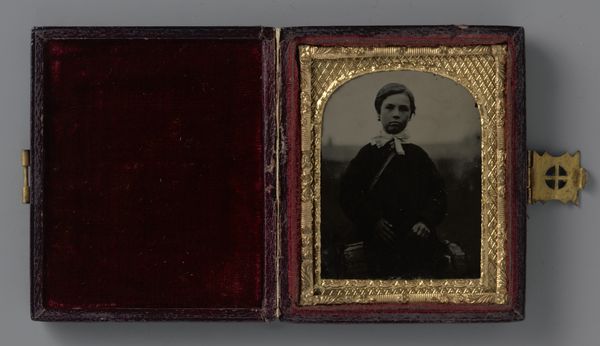
daguerreotype, photography
#
portrait
#
daguerreotype
#
photography
#
realism
Dimensions: height 77 mm, width 63 mm, height 94 mm, width 81 mm
Copyright: Rijks Museum: Open Domain
Editor: This is "Portret van een onbekende vrouw," or "Portrait of an Unknown Woman," a daguerreotype taken sometime between 1855 and 1870. It’s fascinating to see such an early photograph presented like a precious jewel. What strikes you most about this piece? Curator: It's precisely that presentation – the framing, the case – that tells us so much about photography's early role in society. Initially, photography was often meant to emulate painted portraiture, adopting its visual language and social function for those who could afford it. Editor: So it’s less about capturing reality and more about mimicking established power structures? Curator: Precisely. This daguerreotype becomes an aspirational object, signaling the sitter’s, and commissioner’s, participation in a certain social sphere. Consider the anonymous nature of the subject. Does it elevate her, or strip her individuality to meet a generalized model of virtuous womanhood of the period? The answer, of course, is probably both. What impact would wider availability have? Editor: That’s a really thought-provoking point. It is interesting how, at the time, the photograph seems almost staged to align with social expectations. I’d never thought of photography as participating in image politics like that. Curator: Photography, from its inception, has always been deeply intertwined with the politics of representation. Hopefully now you’ll remember to ask “Who is this *for*, not just what is this *of*.” Editor: This makes me want to look at other daguerreotypes from this perspective. It really highlights the socio-political work images can do!
Comments
No comments
Be the first to comment and join the conversation on the ultimate creative platform.
